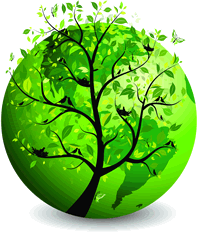Growing with Permaculture
Permaculture is rooted in scientific knowledge and embodies a vast encompassment of techniques and strategies surrounding plants and land usage design in order to grow food. It deals with combining plants, people, and even animals into complete whole systems design solutions in order to increase efficiency, reduce costs, and maximize yields and results.
Whether gardening, farming, maintaining a greenhouse, landscaping, or designing an entire land use plan from scratch, it’s absolutely certain that investigating some of the ideas of permaculture will assist with the growing of all types of plants and trees.
Food Forests
Forest gardens, or food forests, are a truly immense example of what permaculture has added as an example of systematic design to the field of agriculture and gardening, and stands alone on the forefront of what could be the future of growing food sustainably and efficiently. Through the establishment of a food forest, or forest garden, permaculture employs a collection of strategies that have been integrated into one carefully studied and formulated synergy of agricultural science.
Based upon the forest systems of nature itself, and that of working examples of food forest systems, some that have already existed and have been employed by people for hundreds of years, a permaculture food forest is a whole system design that is both effective, and impressive. A multitude of methods used in combination in order to achieve this, including companion planting, succession layering, hügelkultur, mycoforestry, multiple cropping, and even combining animal species within the agricultural system. Forest gardens are one of the world’s oldest known forms of land use for growing food and can be considered the most resilient agroecosystem possible. To learn more about forest gardens, or food forests, about how they operate, their history, and how to go about establishing a food forest through permaculture, visit our main subject page on Food Forests.
Companion Planting
Companion planting is one method that can be used in gardening and agriculture for a variety of benefits, and is an essential technique of planting different crops in proximity to each other for a diversity of purposes. Companion plants can be employed to enable many advantages, including increased pollination, pest control, attracting and providing habitats for beneficial insects, maximizing the use of space, and a large number of other aids to otherwise increase crop productivity, longevity and stability. Many cultures, research groups, organizations, and people, have studied and constructed different companion planting charts that can be used as quick reference guides for those who wish to find beneficial companion combinations for the plants they wish to grow. To learn more about companion plants, and to see examples of some of the charts that have been made available to permaculturists, gardeners and farmers alike, visit our main subject page on Companion Planting.
Succession Layering
In a study of how nature creates and grows a forest, which can be considered the most efficient and biodiverse natural system of land use that exists on our planet, it should be carefully noted by the student, that nature uses a system of succession and layering, as a major tool for achieving these marvelous ecosystems.
Robert Hart, based on his observations of how a natural forest grows, is accredited with pioneering a system based on intercropping layers of plants and trees in order to establish a sustainable food forest. His system of design was adopted by permaculturists and is now an integral part of how a permaculture food forest is understood and designed today. Through planting layers of plants consisting of seven or more layers of trees, shrubs, vegetables and herbs, ground cover crops and climbing vines, a natural forest ecosystem can be established to grow in a way that replicates and creates an ecological succession. To learn about the specific layers that are combined, and about ecological succession as utilized by permaculture, visit our main subject page on Succession and Layering.
More About Permaculture and Plants
The above examples represent only a few methods and strategies that have been incorporated into permaculture teachings, and that can be used to grow more efficient plant systems and crops. To learn more about how to use permaculture to grow plants, and about many other permaculture topics, including hügelkultur, mycoforestry, multiple cropping, and about combining animals in a permaculture food system, visit our page, More About Permaculture.

